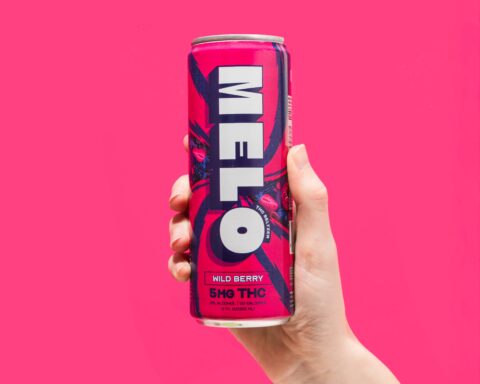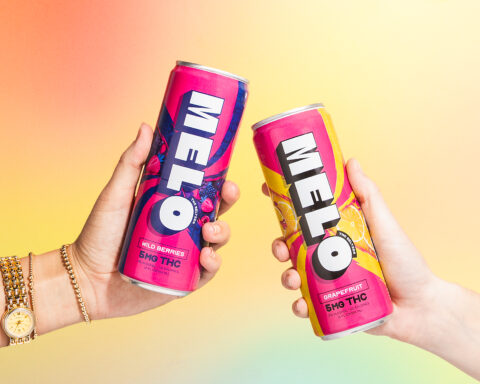The Allure of Beauty
Beauty, a concept as timeless as humanity itself, has captivated philosophers, artists, and poets for centuries. Its allure lies not just in its aesthetic appeal but also in its power to evoke emotions, inspire creativity, and shape social interactions.
The pursuit of beauty is deeply ingrained in human nature. From the earliest cave paintings to modern-day fashion trends, we have consistently sought to express and celebrate what we deem beautiful. This yearning stems from a fundamental desire for harmony, order, and perfection, qualities often associated with aesthetic experiences.
Historically, the concept of beauty has been largely tied to universal standards, often dictated by cultural norms and societal ideals. The classical Greek ideal of physical perfection, characterized by symmetry, proportion, and balance, served as a benchmark for centuries. Similarly, Western cultures have traditionally favored fair skin, slender figures, and youthful features.
However, the notion of universal beauty standards is increasingly being challenged. Cultural nuances play a significant role in shaping perceptions of attractiveness. Different societies hold varying ideals about body types, facial features, and even personal grooming habits.
In some cultures, curvier figures are celebrated, while others prioritize slenderness. Some societies value elaborate hairstyles or intricate body adornments, while others emphasize natural beauty. Recognizing and appreciating these diverse perspectives is crucial for fostering inclusivity and understanding.
The influence of media and technology further complicates the landscape of beauty standards. The proliferation of images on social media often presents idealized and unrealistic portrayals of perfection, leading to body image issues and a sense of inadequacy among many individuals.
It is essential to cultivate a critical awareness of these influences and to remember that true beauty transcends superficial appearances. Inner qualities such as kindness, intelligence, compassion, and confidence are just as important, if not more so, than outward looks.
Ultimately, the allure of beauty lies in its ability to reflect our deepest human aspirations for connection, harmony, and meaning. By embracing diversity, challenging narrow standards, and celebrating the unique qualities that make each individual special, we can cultivate a more inclusive and accepting understanding of what it means to be beautiful.
The allure of beauty is a captivating force that has fascinated humanity for centuries. It transcends cultural boundaries, languages, and time periods, prompting both introspection and outward expression.
From the graceful lines of ancient sculptures to the vibrant hues of Impressionist paintings, the human desire to create and appreciate beauty is deeply ingrained in our nature.
However, the perception of beauty is not static. It is constantly shaped and influenced by social norms, cultural trends, and, increasingly, the pervasive influence of media and advertising.
This interplay between inherent attraction and societal constructs creates a complex tapestry that dictates what we deem beautiful and how we strive to embody those ideals.
Media and advertising play a powerful role in shaping our understanding of beauty. They bombard us with idealized images of people, places, and products, often digitally enhanced to achieve perfection.
These carefully curated representations contribute to the creation of unrealistic beauty standards that can leave individuals feeling inadequate or pressured to conform.
-
The Impact of Images: Television, magazines, movies, and social media platforms are awash with images of “perfect” bodies, flawless skin, and stunning features. This constant exposure can distort our perception of normalcy and lead to body image issues, particularly among young people.
-
The Power of Advertising: Advertisers skillfully leverage the association between beauty and desirable qualities such as success, happiness, and popularity. Products are marketed as solutions to perceived imperfections, promising a transformation that often falls short of expectations.
-
Diversity and Representation: While there have been strides towards greater diversity in media representation, traditional beauty standards still predominantly favor thinness, light skin tones, and Eurocentric features. This lack of inclusivity can perpetuate harmful stereotypes and marginalize individuals who do not conform to these narrow ideals.
It is crucial to recognize the constructed nature of beauty and to critically evaluate the messages we receive from media and advertising.
Promoting body positivity, celebrating diversity, and challenging unrealistic expectations are essential steps toward fostering a healthier relationship with beauty and self-acceptance.
Beyond Physical Appearance
Beyond the superficial allure of physical appearance lies a deeper wellspring of attraction – the magnetism of personality and wit.
While initial glances might be captivated by symmetry and beauty standards, it is the essence of an individual that truly ignites enduring connection.
A captivating personality shines with warmth, confidence, and authenticity. It’s a beacon that draws others in, inviting them to share stories, laughter, and meaningful conversations.
Wit, that spark of intelligence and humor, acts as a bridge, connecting minds and fostering joy. A quick wit can lighten the mood, offer insightful observations, and make even mundane moments sparkle with amusement.
Genuine kindness and empathy further enhance this magnetic pull. People gravitate towards those who demonstrate compassion and understanding, creating a space of emotional safety and connection.
Humor, when used thoughtfully, can disarm pretenses and reveal shared humanity. A well-placed joke or witty remark can break down barriers and foster intimacy.
Passion and purpose infuse personality with an undeniable allure. Individuals who are driven by their passions and contribute to the world around them radiate an energy that is both inspiring and attractive.
Ultimately, the magnetism of personality and wit transcends fleeting physical attractions. It’s a tapestry woven from genuine connection, shared laughter, and the spark of intellectual curiosity.
Beyond the initial spark of physical attraction, enduring connections are built on a deeper foundation of shared values and intellectual stimulation.
Shared values act as a compass, guiding our relationships towards common goals and beliefs. When two people align on fundamental principles like honesty, loyalty, ambition, or compassion, they create a sense of harmony and understanding.
This shared foundation provides a bedrock of trust and respect, allowing for open communication and vulnerability.
Intellectual connection, on the other hand, fuels the flame of passion through stimulating conversation and shared exploration.
Engaging in deep discussions about ideas, philosophies, and current events fosters a sense of intellectual partnership, keeping the relationship vibrant and ever-evolving.
When two minds connect intellectually, they discover new perspectives, challenge each other’s assumptions, and grow together.
This shared journey of discovery strengthens the emotional bond and creates a lasting sense of intimacy.
Ultimately, true attraction transcends superficiality. It blossoms when physical allure is complemented by a shared vision for life, intellectual curiosity, and a profound respect for one another’s thoughts and beliefs.
The Science of Attraction
The science of attraction is a complex interplay of biology, psychology, and social factors. While subjective experiences vary widely, certain neurochemical responses to visual stimuli offer insights into our innate preferences.
When we encounter someone attractive, our brain releases a cascade of neurochemicals, triggering a physiological response often described as “falling in love.” Dopamine, associated with pleasure and reward, surges, creating feelings of euphoria and motivation.
Norepinephrine, responsible for alertness and focus, increases, making us hyper-aware of the attractive individual. Serotonin levels also fluctuate, potentially contributing to obsessive thoughts and the intense focus that accompanies attraction.
Oxytocin, often called the “bonding hormone,” is released in greater amounts during prolonged social interaction with an attractive partner, fostering feelings of trust and attachment.
Visual stimuli play a crucial role in triggering these neurochemical responses. Our brains are wired to perceive certain facial features and body proportions as attractive. Symmetry, for instance, often signals genetic health and reproductive fitness.
Facial symmetry is thought to be an indicator of good genes, as it suggests resilience to developmental challenges. Similarly, averageness in facial features can be perceived as attractive because it signifies a blend of different genetic traits, potentially leading to healthier offspring.
Body proportions also play a role. In women, an hourglass figure, with wider hips and narrower waists, is often considered attractive as it signals fertility. In men, broader shoulders and muscularity are associated with strength and dominance.
Beyond these basic biological cues, cultural norms and personal experiences shape our perceptions of attractiveness. While some features may be universally appealing, individual preferences can vary widely based on upbringing, social environment, and personal taste.
Evolutionary psychology offers a unique lens through which to understand the science of attraction. This field suggests that our preferences for mates are deeply rooted in our evolutionary history, shaped by natural selection pressures over millennia.
Here’s how evolutionary psychology explains mate selection:
- Survival and Reproduction: Our primary drive is to ensure the survival and reproduction of our genes. We’re instinctively drawn to partners who possess characteristics that signal good health, fertility, and parenting ability.
- Physical Attractiveness: Physical attractiveness serves as a proxy for underlying genetic fitness. Symmetry, clear skin, healthy hair, and proportionate features are often seen as indicators of strong immune systems and good genes.
- Waist-to-Hip Ratio: In women, a lower waist-to-hip ratio is associated with higher fertility and reproductive potential. This explains the universal preference for curvier female figures in many cultures.
- Musculature and Facial Masculinity: Men, conversely, are often attracted to signs of physical strength and dominance. This translates to preferences for muscular build and masculine facial features, which signal prowess and ability to protect resources.
- Indicators of Resources and Social Status: Wealth, social status, and ambition can be attractive because they signal a potential partner’s ability to provide resources and security, benefiting offspring survival.
- Emotional Stability and Kindness: Beyond physical attributes, emotional stability, kindness, and intelligence are crucial for raising healthy children. These traits indicate a partner who is nurturing, supportive, and capable of contributing positively to the family unit.
It’s important to remember that while evolutionary psychology offers valuable insights into mate selection, it doesn’t dictate our choices entirely. Culture, personal experiences, and individual preferences also play significant roles in shaping who we find attractive.
- Happiness Quotes To Brighten Your Mood And Life - April 13, 2025
- Moving On Quotes For Healing, Growth, And Letting Go - April 13, 2025
- Funny Quotes To Bring Laughter And Joy To Your Day - April 13, 2025



